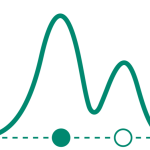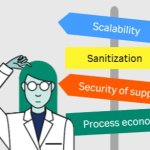FDA approved 37 drugs in 2022, within the normal range for the past decade or so. The European Medicines Agency (EMA) was even more successful—approving a record 55 therapies. More than half of these approvals were for patients with rare diseases such as acid sphingomyelinase deficiency (an inherited disease that affects the body’s ability to metabolize fat) or generalized pustular psoriasis (a rare, life-threatening skin disease). Half were first in class, meaning they operate via a unique mechanism of action. These treatments illustrate a sea change within the pharmaceutical industry—a rising requirement to handle complex molecules for emerging therapies. In parallel, brought on by the obvious commercial success of the warp speed program for COVID-19 vaccines, came a need for reduced timelines, which accelerated the ongoing Industry 4:0 analytics, digitalization, and machine learning deployment programs.
As we move into 2023, let’s look back at some of the most popular 2022 articles from the Bioprocess Development Forum.
More Hands-on Content, as the Industry Struggles to Keep Up with the Science of novel molecules
In lockstep with increasing molecular diversity, popular content on the Process Development Forum last year focused on background considerations to address such diversity. The article, “Next-generation Protein L Chromatography,” for example, begins by establishing that the diversity of antibody variants in today’s pipeline presents unique challenges for purification process and proceeds to offer practical solutions. Updates on purification advances continued in, “Enhancing Resins Addresses Purification Concerns,” which addresses purification concerns through advanced resin use.
Nuts-and bolts-detailed articles proved the most highly sought after in 2022. Providing real-world advice from experts was met in the question-and-answer session on oligonucleotide synthesis scale up by Greg Farlow from Cytiva. While this certificate-level interactive course on quality by design (QbD) covered fundamental concepts such as the principles of design space and establishing control strategies. Question-and-answer video interviews were dominant in as well, which we will see more of in 2023 due to the high usage and the positive feedback they generated. In general, content was much more “hands-on” in 2022, driven by an overall industry struggle to keep pace with advancing science demanding changes in most (if not all) elements in the process development and manufacturing field. We could see this clearly in an analytic oriented interview, which delivered useful information to many, describing real-time analysis tools implementation, and how these tools save time versus off-line analytic approaches. Also, this interview shares insights related to moving from manual buffer preparation to implementing inline conditioning for automated buffer management.
A Smarter, More Digital Future
Investment, research, and implementation of digital and machine learning approaches proliferated in 2022 with a renewed sense of commitment to Industry 4.0, and the measures deployed to make process development both smarter and faster. Mainstream articles, no pun intended, covering tools and methodologies for smarter downstream process development were highly popular. Smart process development being a collection of approaches to improve process outcomes and speed up process development. That nicely encapsulates an overall trend to become more mathematical in process development, and the real-word utility of this can clearly be seen in an article that compares statistical models with mechanistic models. Mechanistic modeling is a mathematical representation of the physiochemical transport and interactions that occur during chromatography, and can be applied for mAbs process development, but also advanced therapies process development.
With certainly, the digital era has made a home in biopharmaceutical manufacturing. With heavy investment in Industry 4.0., process practices are being swept along with this rising tide. In the same way that artificial intelligence is rearranging priorities for budget spend in the Big Pharma quality departments, updating mathematics and statistics knowhow is becoming essential each day in the process development community.





